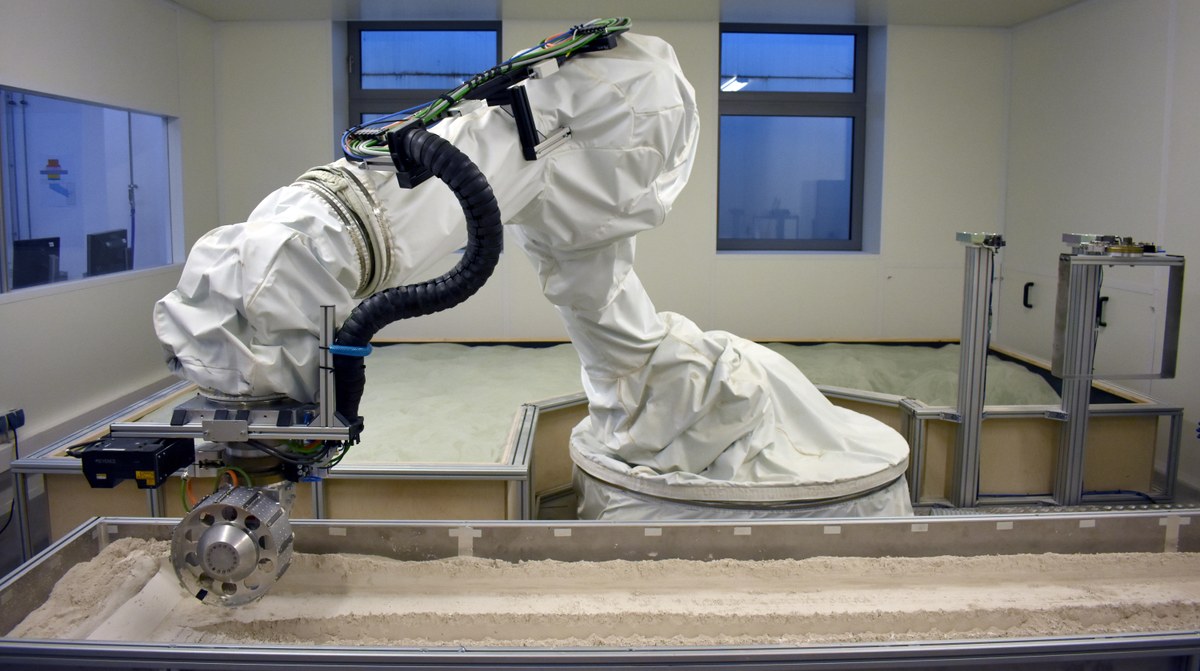Terramechanics
Discrete Element Methods (DEM)
The in-house developed GPU-based DEM tool "Sir partsival" focusses on the efficient implementation of microscopic (particle to particle) and macroscopic (boundary conditions) effects. The implementation of the software on GPUs enabled significantly shorter calculation times than comparable CPU-based tools. DEM simulations were used, among other things, to develop and optimise the wheels of the MMX rover IDEFIX, where a wheel geometry was found that enables locomotion on very soft regolith.
The semi-empirical contact model
The semi-empirical contact model SCM offers a computationally efficient representation of complex terramechanical effects such as soil flow and deformation in multi-body simulations. The resulting flow fields are calculated for discrete points in the soil and the resulting deformation and bearing capacity of the soil are calculated from this. SCM was used in the development and verification of the righting algorithm of the MMX rover IDEFIX. For this purpose, many thousands of simulations with a simulated sequence of up to one hour were carried out in an area of approx. 100 square metres. Simulations on this scale, taking into account ground deformation, are only possible with SCM.
Machine learning based terramechanics simulation
A new branch of research is the synthesis of models using AI methods based on measurement data and simulation data. This combination also makes it possible to use training data for situations that cannot be modelled in experiments.

